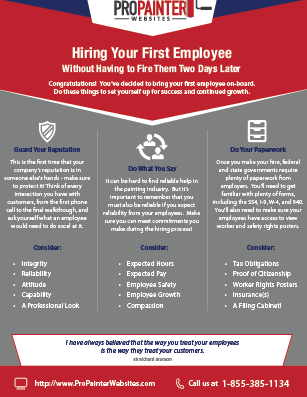Seasonal Factors To Consider For Commercial Outside Painting: What You Required To Know
Seasonal Factors To Consider For Commercial Outside Painting: What You Required To Know
Blog Article
Web Content Writer-Aguilar Rodriquez
When you're preparing an industrial outside painting project, seasonal aspects can make or break your outcomes. You'll intend to think about how temperature level and moisture effect paint application and drying out times. Selecting the appropriate season can ensure your paint adheres effectively and lasts longer. Yet which periods are absolutely the most effective for this type of work? Let's explore the crucial elements that can impact your task's success.
The Influence of Temperature Level on Paint Application
When you're preparing a commercial exterior painting task, the temperature level can significantly impact how well the paint sticks and dries.
Preferably, you intend to paint when temperatures range in between 50 ° F and 85 ° F. If it's also chilly, the paint might not treat properly, causing problems like peeling or breaking.
On the other side, if it's also hot, the paint can dry too promptly, protecting against appropriate attachment and leading to an unequal surface.
You must also take into consideration the moment of day; morning or late afternoon offers cooler temperatures, which can be extra desirable.
Constantly inspect the supplier's suggestions for the specific paint you're using, as they commonly offer assistance on the perfect temperature array for optimum results.
Moisture and Its Result on Drying Times
Temperature level isn't the only environmental factor that affects your industrial outside paint job; humidity plays a considerable role also. High humidity degrees can reduce drying out times considerably, affecting the total high quality of your paint job.
When the air is filled with wetness, the paint takes longer to treat, which can lead to problems like bad adhesion and a greater risk of mold growth. If you're painting on a particularly humid day, be prepared for prolonged wait times in between coats.
It's crucial to monitor neighborhood climate condition and strategy accordingly. Preferably, aim for humidity degrees between 40% and 70% for optimal drying.
Maintaining these factors in mind guarantees your task remains on track and provides a lasting finish.
Best Seasons for Commercial Outside Painting Projects
What's the very best time of year for your industrial outside paint tasks?
Springtime and very early loss are commonly your best choices. Throughout these seasons, temperature levels are moderate, and humidity levels are commonly lower, developing optimal problems for paint application and drying out.
Avoid summer season's intense heat, which can trigger paint to dry too rapidly, bring about bad adhesion and surface. Likewise, https://cabinet-painters-near-me43210.blogsmine.com/34797912/getting-ready-for-an-effective-paint-undertaking-depends-on-one-crucial-aspect-that-is-commonly-overlooked-but-it-can-considerably-affect-the-final-result can prevent proper drying and curing, risking the longevity of your paint job.
Aim for days with temperature levels in between 50 ° F and 85 ° F for ideal outcomes. Bear in mind to check the local weather prediction for rainfall, as wet conditions can destroy your job.
Planning around these factors ensures your paint job runs efficiently and lasts longer.
Final thought
To conclude, intending your commercial exterior paint tasks around seasonal considerations can make a considerable distinction in the end result. By scheduling work during the perfect temperature levels and moisture degrees, you'll ensure better bond and drying times. Remember to keep https://www.consumeraffairs.com/homeowners/exterior-house-painting-steps.html on neighborhood weather report and select the correct time of year-- springtime and very early fall are your best bets. Taking these actions will help you achieve a durable and professional finish that lasts.
